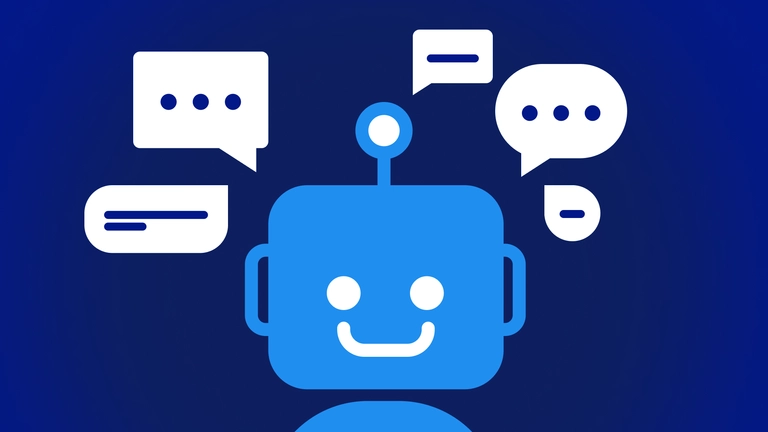
Five types of chatbots you can build using one platform
Each chatbot offers a different level of automation. Find out about the 5 main types of chatbots and which one fits your business needs.
Ten years from now, if there’s one thing we will remember chatbots for, it will be for helping you shift from the era of hard work to smart work. According to a study, chatbots are already resolving customer queries 70% of the time without human intervention.
So the automation wave isn’t just another trend. It’s the future for any business that wants to scale up without burning through its cash flow or burning out its workforce.
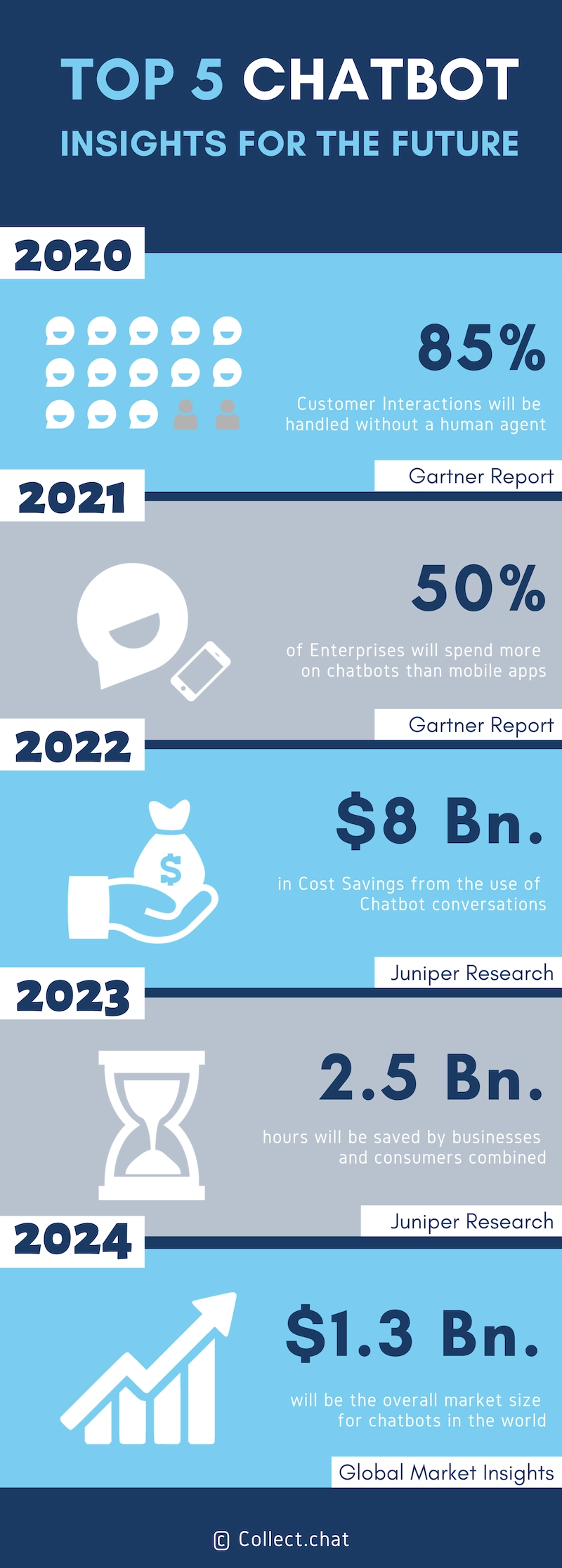
However, a chatbot isn’t a guaranteed ticket to success if you don’t pick the right type of chatbot to support your business.
This article will help you understand the five main types of chatbots available and the services they can automate for your business.
What is a chatbot?
A chatbot is a software tool to conduct automated conversations with humans through an interactive interface on live messengers like Facebook, Instagram, WhatsApp, as well as SMS and voice. It can simultaneously engage with a hundred customers or a million of them to resolve their queries instantly.
Its primary purpose is to take over all the mechanical productivity-killing tasks at work and free you to take up essential tasks like strategy and optimization (or just getting more time to do what you love).
Five types of chatbots you should know about
- Button-based chatbots
These chatbots present answers to customer queries through a basic menu format. You can set up a list of the most commonly asked questions and assign replies that users can access by simply tapping the relevant button. Then, the chatbot taps into the knowledge base you program to pull up an answer.
Although these bots can’t take care of more flexible and specific queries, they can still take care of 80% of routine queries.
Most times, customers don’t even know where to begin when it comes to navigating your website. That’s where a support chatbot can shine by giving them a welcome FAQ with buttons to initiate their engagement with your brand.
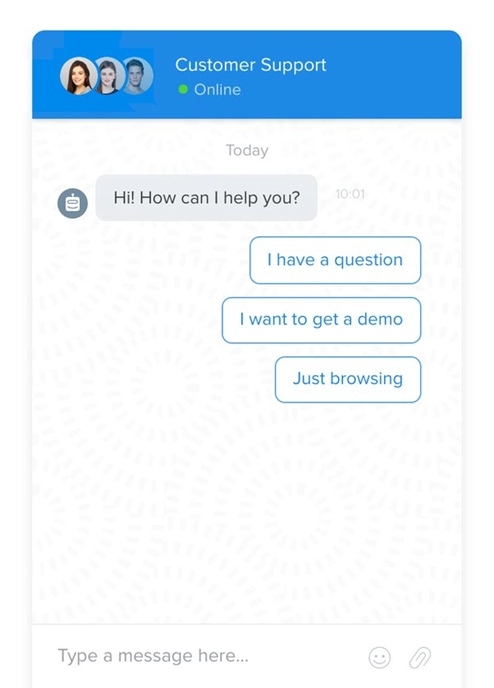
- Keyword recognition-based chatbots
A keyword recognition-based chatbot is a more flexible version of a button-based chatbot. When your customers send a query, it identifies relevant keywords and gives them the necessary response.
For example, let’s say your customer asks 'Where is your store located? ' you can teach your chatbot to recognize keywords like 'location' and 'address' and respond with your store address details.
Set your chatbot’s AI to respond to exact keyword matches to avoid incorrect responses. You can set similar keyword matches so that your bot recognizes other words or phrases for the same query. This helps you avoid losing precious leads just because they made a typo or used different words in their question.
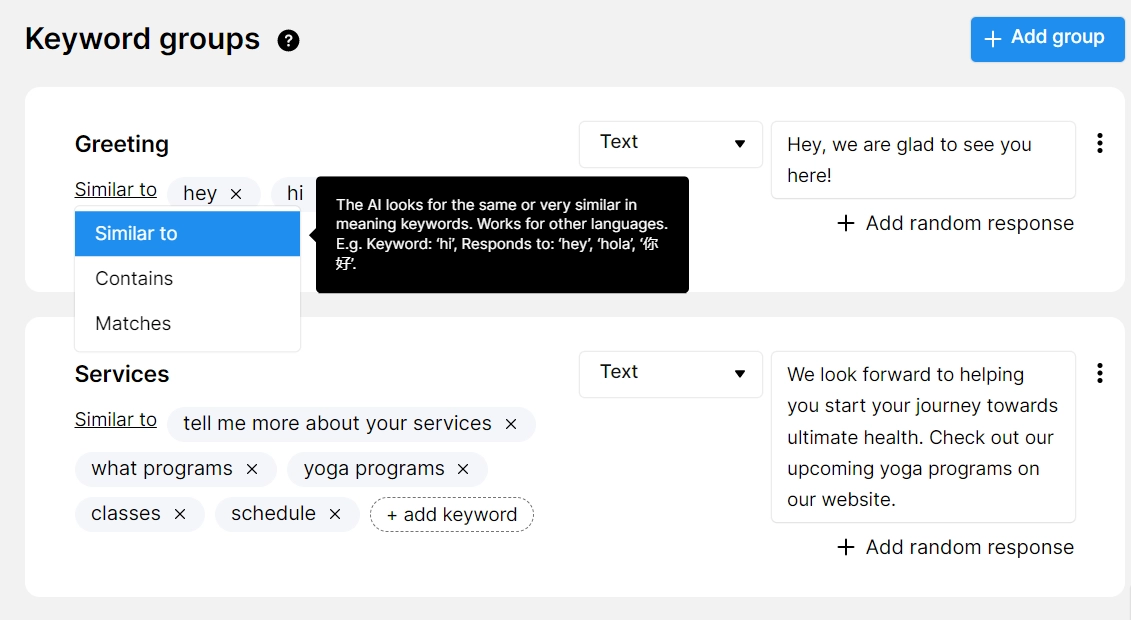
- Rule-based chatbots
Rule-based chatbots are one of the easiest ones to launch, needing minimal investment and zero training with datasets. They follow a set of predefined rules to resolve support queries. But if the user deviates even slightly off script, your chatbot won’t be able to help them.
They are best used to give the most basic information about your business and hand over the conversation to a human agent for further queries.
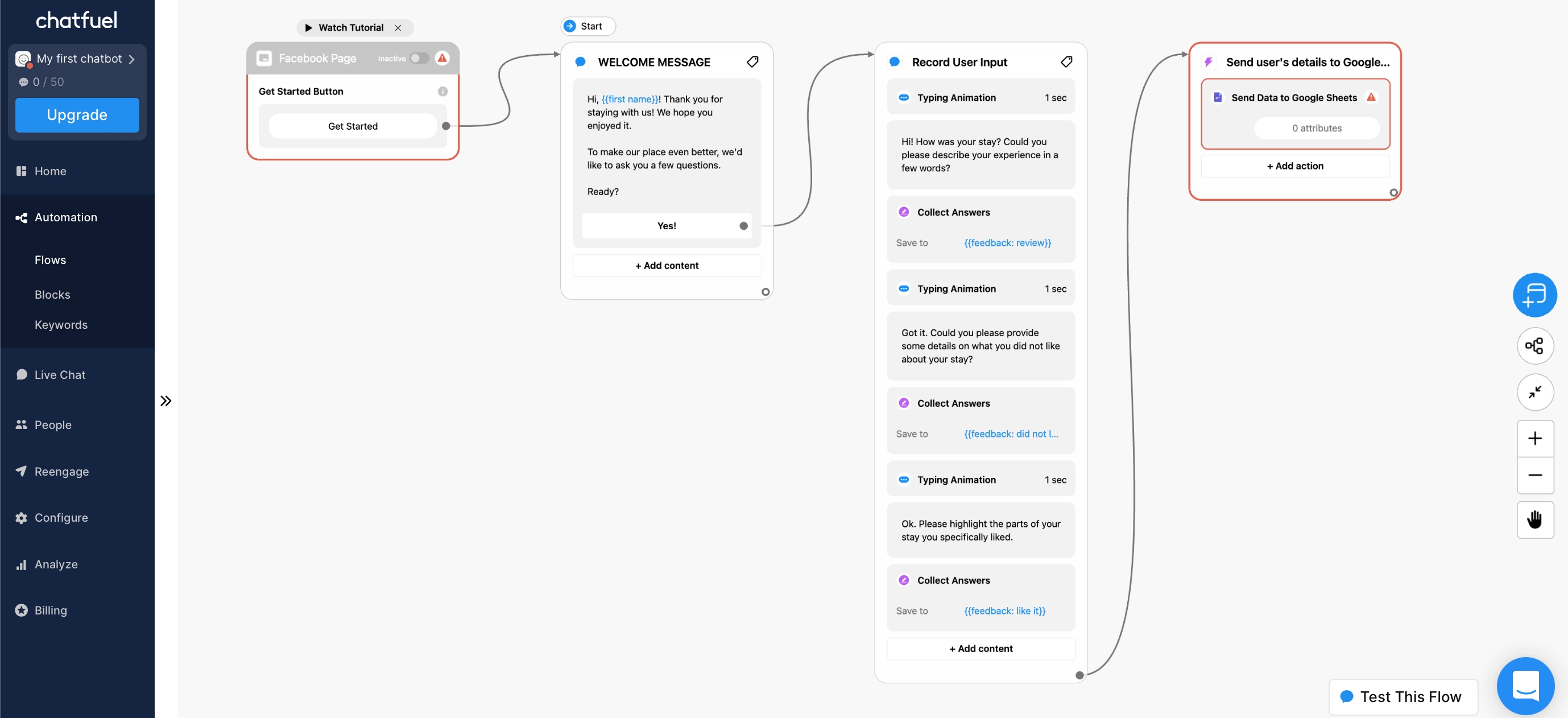
- AI chatbots
What makes a chatbot intelligent is its ability to learn from its past interactions and improve its responses.
With Natural Language Processing (NLP) and Machine Learning algorithms, your chatbot will start to remember conversations with specific users to learn and grow. Your automated conversations will become more natural and more human.
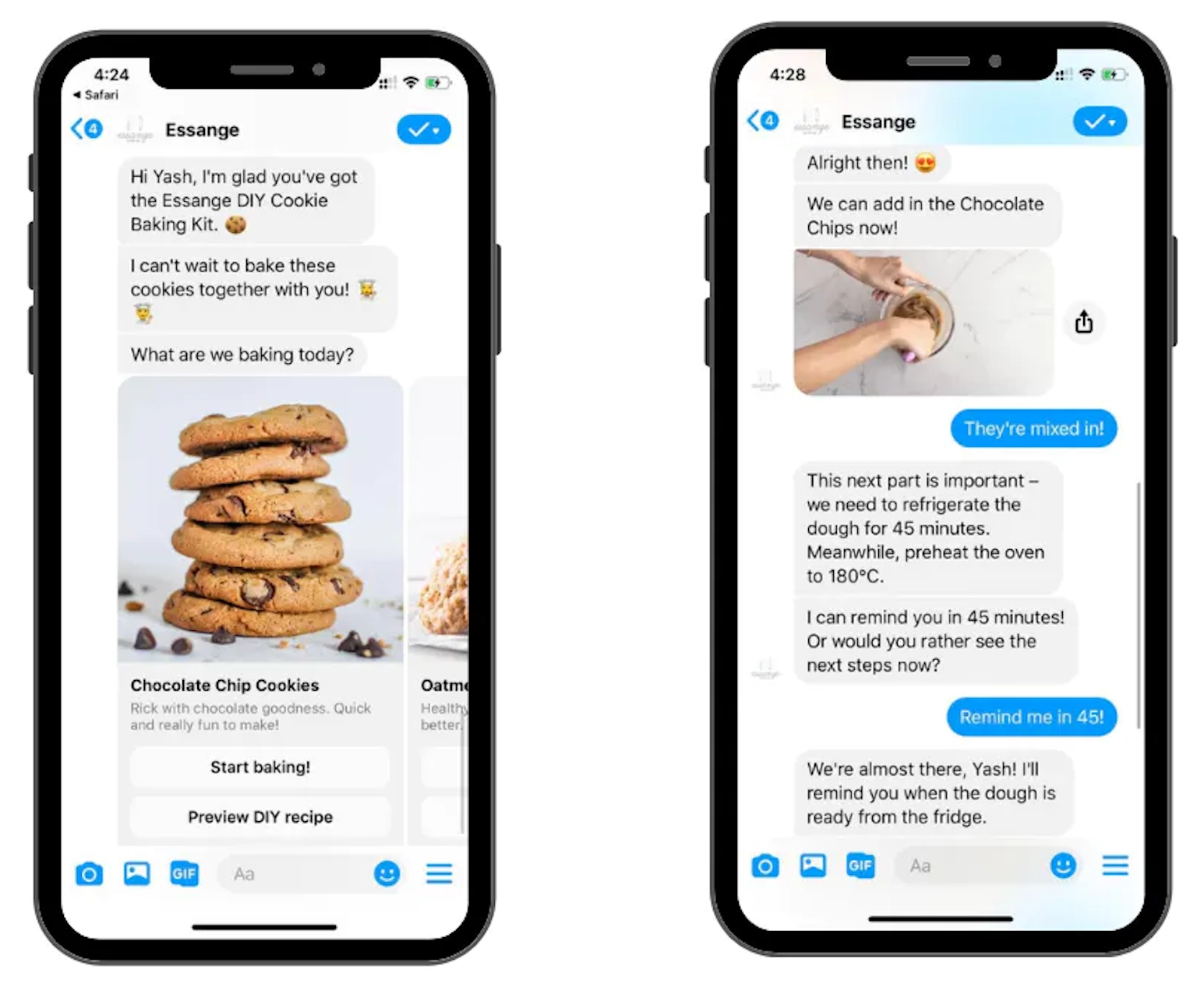
It does take more resources to build and train an AI chatbot compared to rule-based chatbots.
The bigger and more diverse your dataset is, the more intelligent your bot gets at personalizing responses. So, organizations that already have a lot of user data will significantly benefit from them.
You can’t really understand user intent fully without accounting for user sentiment. AI bots analyze both the content and context of your customer’s query before responding. In other words, they identify your customer’s current emotions to react naturally. That’s why they are also widely known as contextual chatbots.
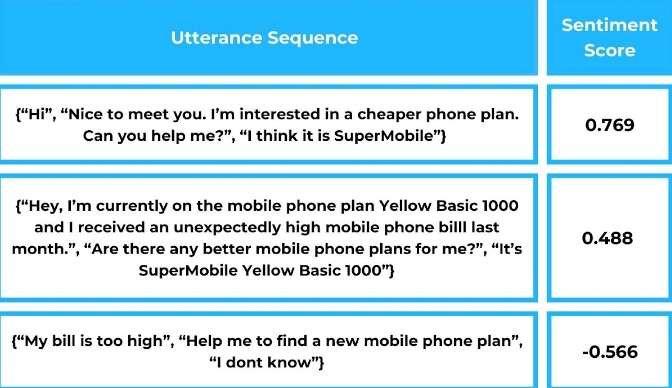
5. Omni-channel chatbots
Omni-channel presence means your brand keeps track of your customer’s engagement journey with your brand across all channels and devices. A study showed that omnichannel marketing could boost purchase frequency by 250%.
It’s not unusual for a customer to initiate a conversation through your Instagram account, book a demo through your website live chat, and send a few emails before purchasing your product.
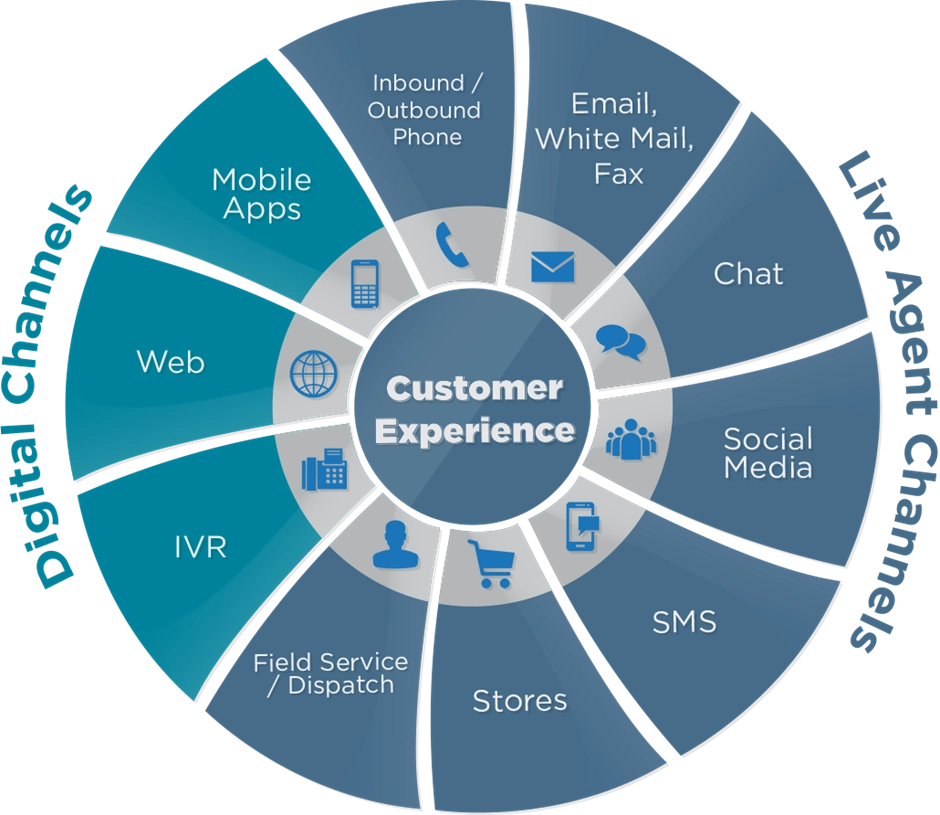
Imagine how troublesome it’ll be to fill in your details and requests across all these channels again and again. That’s why your chatbot should quickly identify your customers across all channels and provide answers that help them pick up where they left off.
Build any type of chatbot you need on one platform
Now that you picked out the type of chatbot that fits your business, you may be wondering how long it is going to take to build and launch it. With Chatfuel, you can create all five types of chatbots without any coding experience and cover many of your channels of engagement.
Try out our wide selection of chatbot templates covering every major industry and use case, which can be customized to set up your bot in as much time as it took to read this article.
